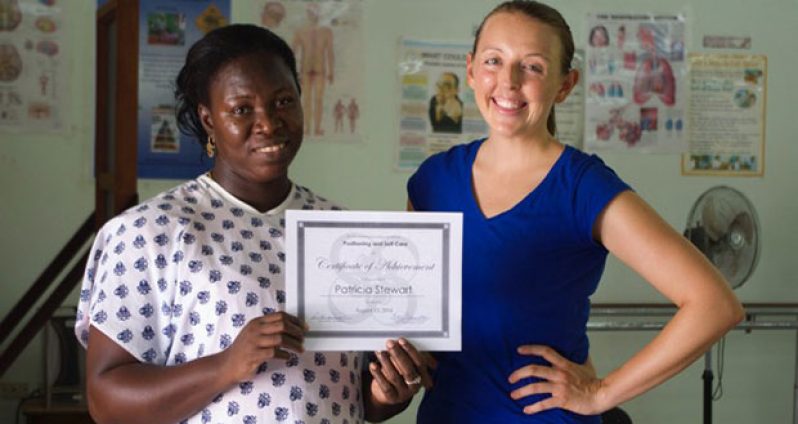ITS rehabilitation in 2011 delivered a first for Guyana and another advance in support of the interests of Persons with Disabilities (PWD); the Cheshire Home now provides Guyana’s first semi-independent living facility.
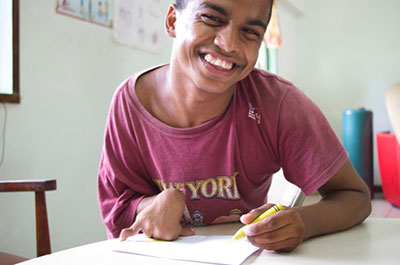
Located in Mahaica, Region 4 (Demerara/ Mahaica), Cheshire Home has been the birthplace of many success stories for PWD.
And in the spirit of ‘firsts’ the Home has hosted, for the last year, its first Peace Corps Response Volunteer, Kera Murphy, who ended her stint with the home last week.
Although volunteer therapists and professionals have intermittently visited the Cheshire Home for capacity-building sessions, there has not been a resident volunteer dedicated in this area since 2012, since Murphy.
A NECESSARY SPACE
An occupational therapist, she pegs her greatest success in the last year as being able to create a space where several persons, with varying levels of physical disabilities, could exist and do something as simple, yet necessary, as given them room to breathe when they are upset– a privilege, like many others, that able persons take for granted.
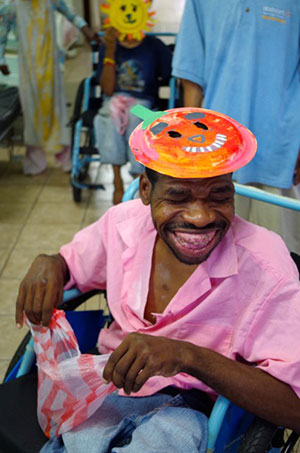
“Occupational therapy existed in a limited way before this year. What we had was a storage room. With the aid of a Peace Corps Partnership grant, we cleaned that out and created a space. Now what you have is a space full of light, where the people here are able to play games of try a musical instrument or just calm down when they get upset,” she said, during a recent interview with the Guyana Chronicle.
Murphy detailed the fact that previously, when no such space existed at the Home, residents experienced occupational deprivation and reported feelings of boredom, depression, and lack of self-efficacy.
“The room was also created to support the use of sensory strategies to help soothe residents, particularly those with intellectual and communication
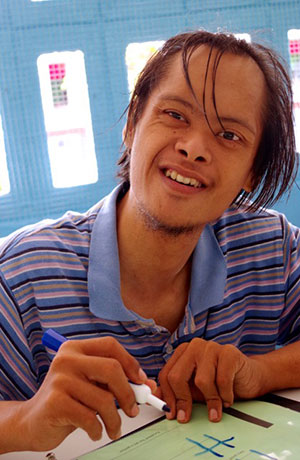
disabilities that sometimes engaged in self-harm or destructive behaviours, in place of restraint techniques,” the volunteer said.
The Cheshire Home has 25 residents, the youngest only 11-years-old, while the eldest is 52-years-old. Their disabilities range from cerebral palsy and Down syndrome to an intellectual or speech disability.
With this range of physical disabilities, as well its consequent realities, things like having a space have added value to the type of services provided by the Home. “Sometimes when some of our residents get upset, the thing to do would have been try to restrain them, but what an occupational therapy room does is provide an opportunity to offer help in a different way. We could help them to swing in the hammocks, distract them with a preferred object or toy, or provide them deep pressure touch, all of which can be soothing,” Murphy said.
The services offered by Cheshire Home include outpatient rehabilitation services three times a week and residential care for all residents twenty-four hours a day.
The Peace Corps volunteer contends that the Home offers an important service to persons with disabilities, all in the interest of providing opportunities and support for a healthy and well-lived life, regardless of physical or intellectual challenges.
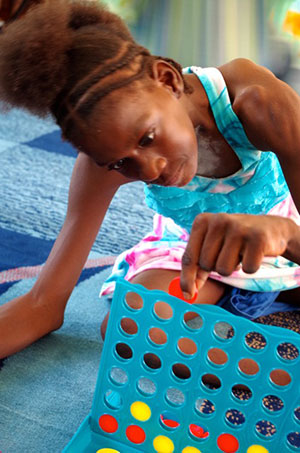
The new occupational therapy room is the latest addition to the Home’s range of services and 17 staff members were trained, resulting in all 25 residents being able to visit the room at least weekly, as well as the “complete absence” of restraint usage.
POSITIONING RESIDENTS
With its expanded range of services, Murphy explained that another objective of the Home is to position some of the current residents for semi-independent living.
“Most of the barriers we have had have been access to resources, or sometimes as simple as a matter of communication, but what we aim to do is to position the residents in the semi-independent facility. What we do is develop programmes for each individual according to his or her disability,” she said.
According to her, in the last year her focus of work included building the capacity of residents and staff to improve residents’ health and well-being.
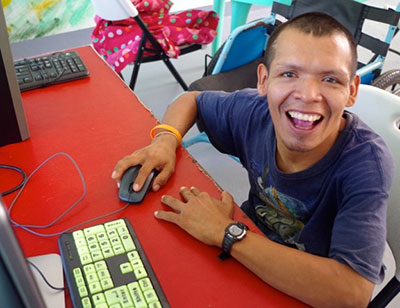
“We did observations and interviews to determine the needs of service providers such that they could provide improved care for residents. Development of a resident care plan was also necessary to monitor care and determine if appropriate and adequate services were provided,” she said.
The Peace Corps volunteer added that residents also received training to increase their skills in areas such as self-care, communication and social interactions to support more independent living, allowing some to then transition to the semi-independent living facility.
“Staff was also provided assistance in creating the criteria for admission to the semi-independent living facility as well as training to evaluate candidates and support individuals who transitioned to that environment,” she said.
MAJOR ACCOMPLISHMENTS
Murphy added: “After conducting a needs assessment, trainings in positioning, transfers and biomechanics, and practices to support health and self-care routines were determined to be necessary.”
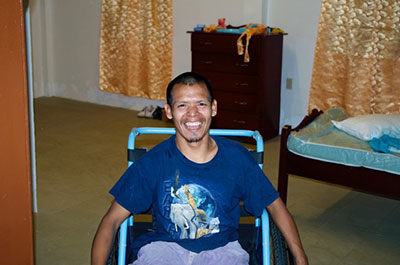
She explained that these workshops were provided weekly over the course of four months to provide education and hands-on demonstration as well as problem-solve and discuss any barriers staff felt they might have to implementation.
“Seventeen service providers were reached with three resources created, and through pre-and post-test evaluation methods, more than 85 per cent service providers were found to have learned at least one skill, with at least 60 per cent found to implement and sustain skills learned over time,” the volunteer said.
According to her, additional work was also done with the staff nurse at the Home to create a resident care sheet for use by nurses to monitor care given to residents and improve nurse communication.
Murphy said: “Two of the current residents were evaluated and determined to be ready to transition to the semi-independent living facility. Life skills trainings were provided to assist them in maintaining routines and managing their new home; for example, understanding and adapting cleaning methods, reading calendars, etc.
“Two staff members were trained in the evaluation, which can be used for future residents. These staff members were also included in the creation of admission criteria to be used by the Home’s management committee.”
OTHER PROJECTS
Relative to her other engagements, while in Guyana, the volunteer stated that she also worked with the Department of Rehabilitation Services to increase awareness of occupational therapy through trainings, newspaper articles, and presentations.
“I did work as a mentor for the 15-person occupational therapy special interest group and in doing so, provided members workshops on the tenets of occupational therapy and also mental health. I also presented on pediatric conditions to 75 rehabilitation professionals during the annual ‘Rehab Week’ and provided a newspaper article regarding the prevention of and interventions for cerebrovascular accidents,” she said.
Murphy has also been involved in coordinating a volunteer event, which brought together University of Guyana (UG) students, rehabilitation assistants, and Cheshire Home staff to celebrate World Occupational Therapy Day. The event included a clothing and toiletry drive for Cheshire Home residents and the painting of the occupational therapy room.
“We did it to increase awareness of the event and those that would be impacted by the services of volunteers,” she said.
The Peace Corp volunteer added that she partnered further with UG to provide clinical education to first and third-year students in the Bachelor of Medical Rehabilitation programme.
“I was a clinical educator for five students during an eight-week clinical attachment, providing hands-on demonstration and trainings in evaluation and interventions for persons with disabilities and environmental modifications,” Murphy said.
Two other students, she said, participated in a shorter, three-week attachment to observe the practice of occupational therapy and learned skills in wheelchair assessment and evaluative techniques.
“I also taught an 8-week course on biomechanics and musculoskeletal conditions to twelve third-year students at the university,” she said.
A COUNTRY OF MANY LOVES
Helping the residents is one of the many things Murphy had declared her love for, in the past year.
“My experience here has been fantastic. I love the light hearted way Guyanese interact with people. It is a beautiful country with so much potential, potential in its people and in what it has to offer,” she said.
The legendary Kaieteur Falls and the Lethem Rodeo were among some of the local attractions that she has managed to tear herself away from the Home for. “All of it was beautiful,” she said.
Delving into a few personal details, Murphy disclosed that she started work with the Peace Corps in 2006 and served in Guatemala before coming to Guyana.
“I started working in Guatemala and then I went to North Carolina to complete my Master Degree in Occupational Therapy and worked in the same field for a little bit. Before I came here, a Peace Corps recruiter asked me to consider the possibility, given my area of work. I looked at it as a wonderful opportunity and was lucky to join about 45 other two-year volunteers and eight response volunteers in their work here,” she said.
Asked about her future plans and relations with the Cheshire Home, Murphy said “Guyana and Cheshire Home will always have a place in my heart. I’m sure that we will continue to keep in contact.”
She also expressed the hope that the Home will continue working hard to provide a high standard of care for its residents.
The Cheshire Home was first established in 1972, as a home for individuals with severe disabilities.
(By Vanessa Narine)



.jpg)



